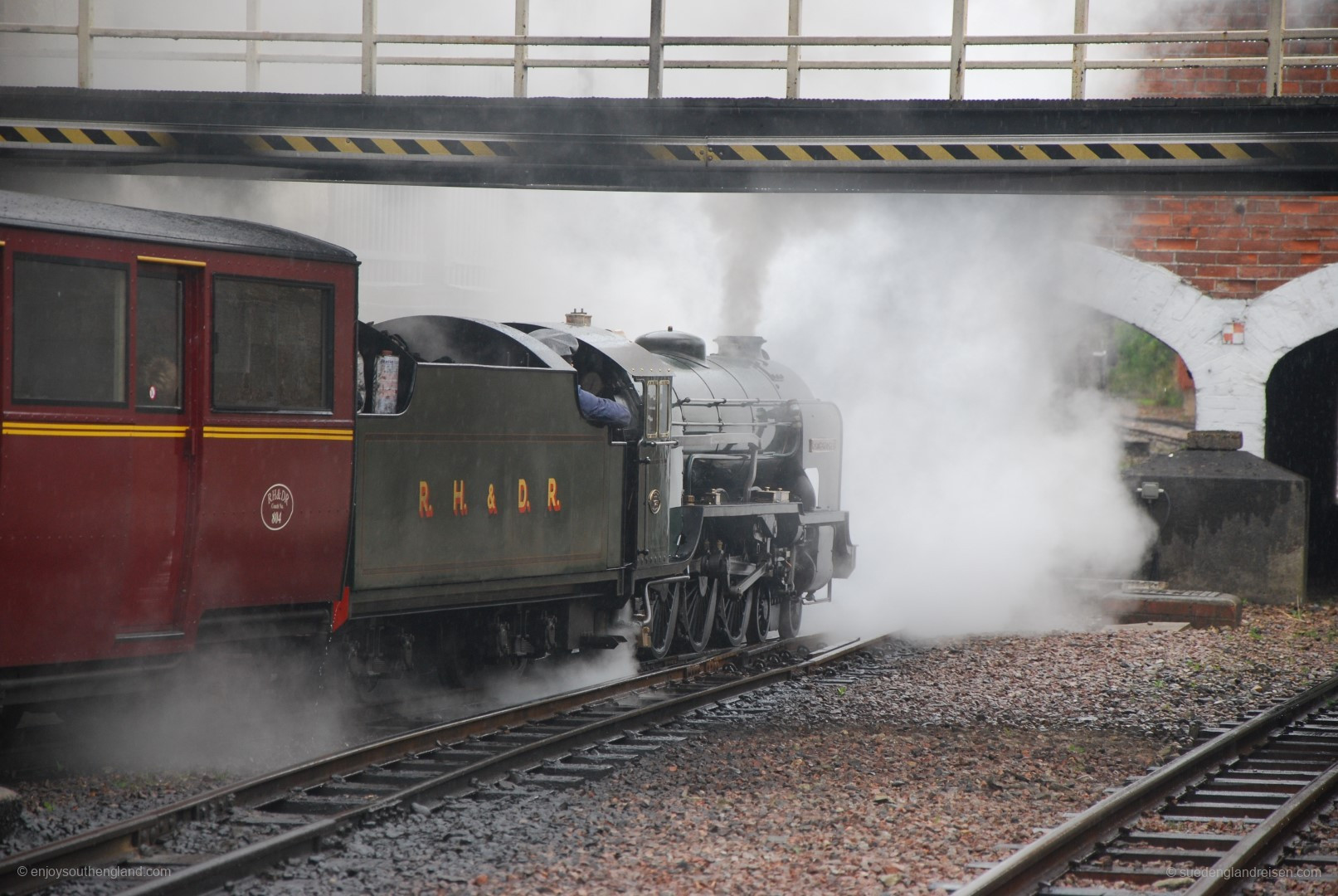
Romney, Hythe & Dymchurch Railway
The charming eccentricity of the British can be clearly understood here in the south-east of England. In the 1920s, for example, it became fashionable to recreate the most modern and impressive locomotives in gauge size 1:3 and to have them run to a regular timetable on specially built lines on correspondingly narrow-gauge tracks. The largest such line is the Romney, Hythe & Dymchurch Railway, which is located near the coast of the English Channel near Dover and Folkestone. It was opened in 1927 and still covers a distance of 22.5 kilometres (13.5 miles) between its two termini, Hythe and the Dungeness Lighthouse. The gauge is 381 millimetres (15 inches), just like the Vienna Liliputbahn. Once known as the “world’s smallest public railway”, it now operates daily from Easter to the end of September, and on weekends in March and October with up to 14 pairs of trains per day.
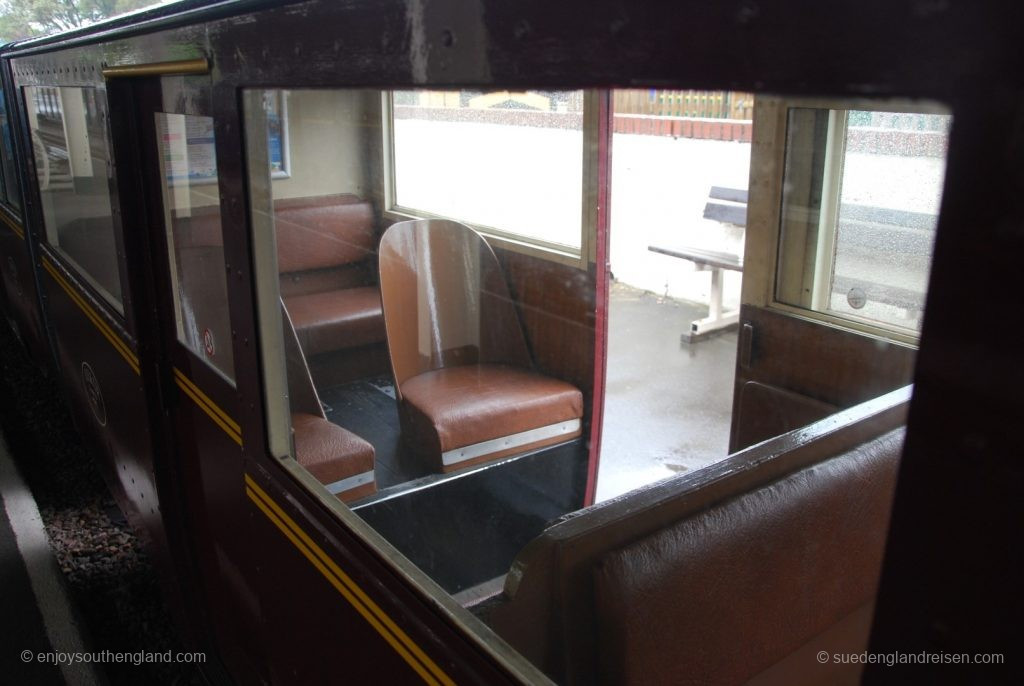
Romney, Hythe & Dymchurch Railway – a narrow line passenger carriage
There are currently eleven steam locomotives and two diesel locomotives in service, which carry long passenger trains with space for up to 200 passengers. The steam locomotives have as a model British (fast train locomotive2’C1′ “Flying Scotsman” with 5 examples and 2 ‘D1′ with 2 units), American (Pacific locomotives 2’C1′ with 2 units) and German (fast train locomotive 2’C1’ with one copy as well as a small B-coupler) railway vehicles. The diesel locomotives represent more recent models from Great Britain. The passenger carriages have two seats next to each other, mainly benches with some armchairs. Fixed trains are assembled and each one is painted in different colours.
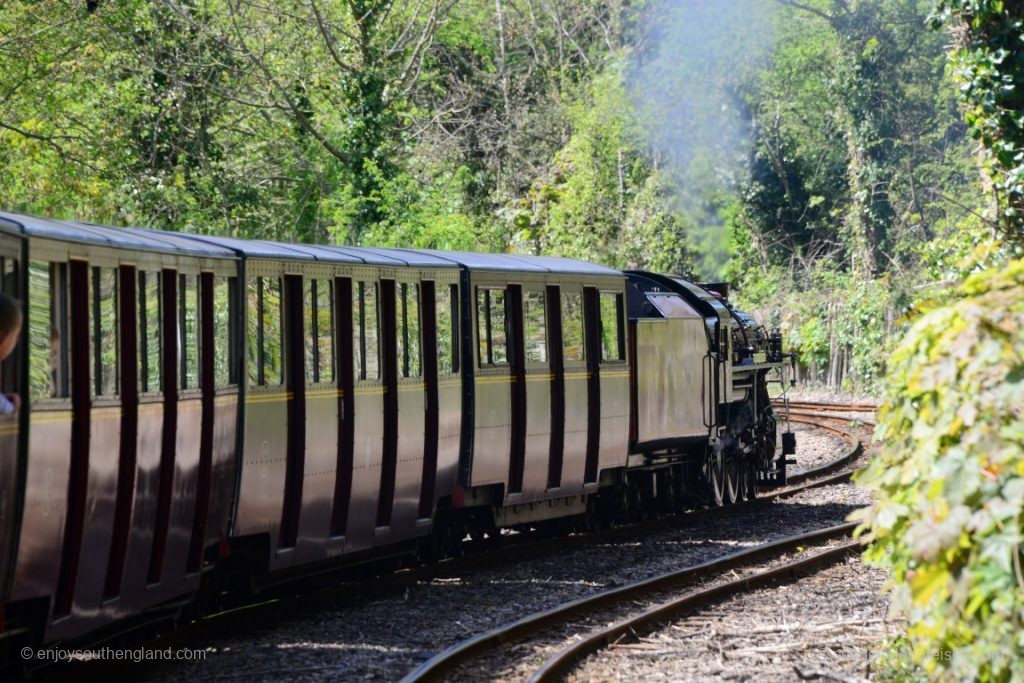
En route to Hythe on the Romney, Hythe & Dymchurch Railway
The route starts from the old port city of Hythe, a member of the 11th -century confederation of the “Cinque Ports” (Five Ports), which still exists today. Starting from this terminus with 3 platform tracks and a passing track for moving the locomotives, Dymchurch, a small coastal town with a beach, is reached after 20 minutes. After another 15 minutes, the centre of the marshland “Romney Marsh”, the eponymous town of New Romney, is reached via stops at “St. Mary’s Bay” and “Romney Warren Halt”. This is the operational centre of the RH&DR with a seven-track covered station, turntable, coaling plant and boiler house as well as repair shop. All locomotives are redrawn here.
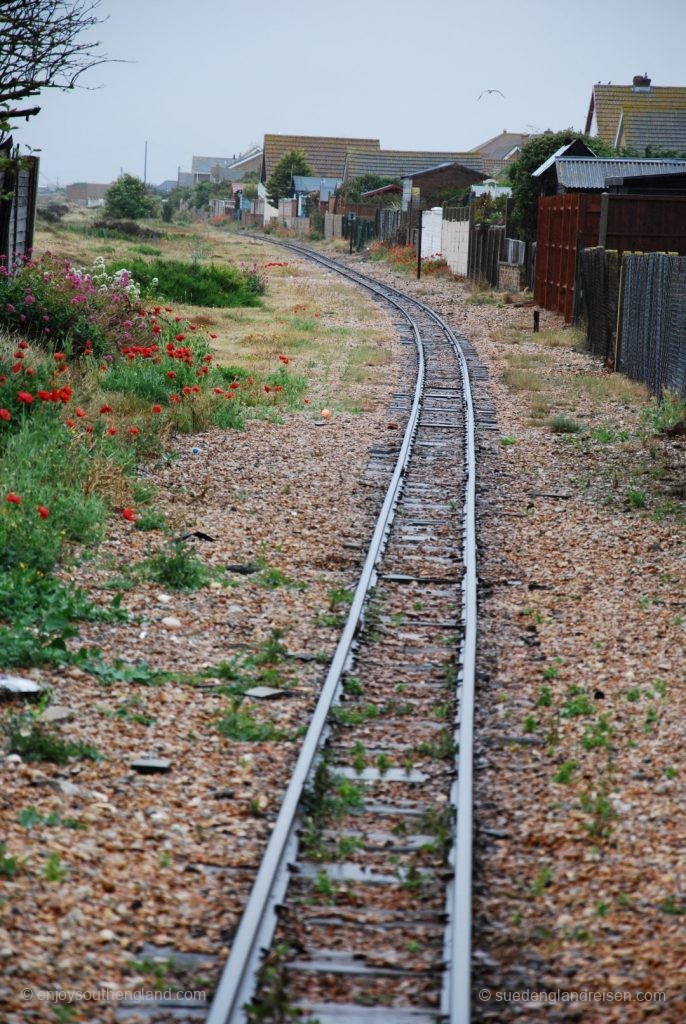
Romney, Hythe & Dymchurch Railway – southern route from Dungeness
The route continues south via “Romney Sands” (a beach holiday village) to the Terminus “Dungeness” and runs directly to the historic lighthouse, which is reached 27 minutes after departure from “New Romney”. While the line in the northern section between Hythe and New Romney is still a double-track main line, the southern section between New Romney and Dungeness is completely single-track. The crossing of northbound and southbound trains is always at New Romney, where it is possible to change to the other train at the same platform.
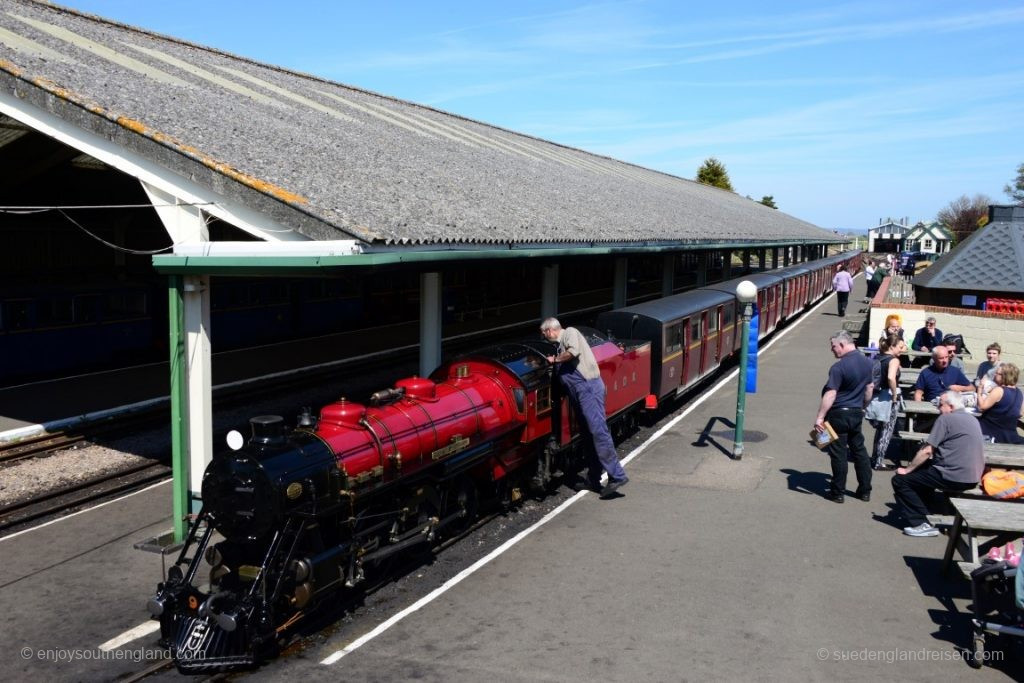
The Romney, Hythe & Dymchurch Railway is 1:3 scale – but a public railway!
Both parts of the route have very different characters: At least the northern part runs partly through agricultural land “in the countryside”. The southern part, on the other hand, cannot deny a certain dreariness. Due to continuous development of the coastal strip, the route runs virtually past backyards through flat, little used and rather boring countryside. The land development is simpler and more unkempt the closer you get to Dungeness. Despite further (pebble) beaches and self-promotion as a holiday area, a longer stay here is undoubtedly hardly appealing. Visible from afar, the local nuclear power plant, which is also close to the terminus, rises out of nowhere in the marshland. This marshland has only been formed from sediment deposits in the last 200 years. Apart from a visit to the historic lighthouse and the nearby beach, the visitor has little more than the station café at Dungeness to bridge the time until the return journey. Nevertheless, a trip is highly recommended, as is a visit to the station of “New Romney”, which offers an incredible flair of real steam operation and at the same time incredulous fascination at the size of the locomotives and carriages at its regular train crossings.
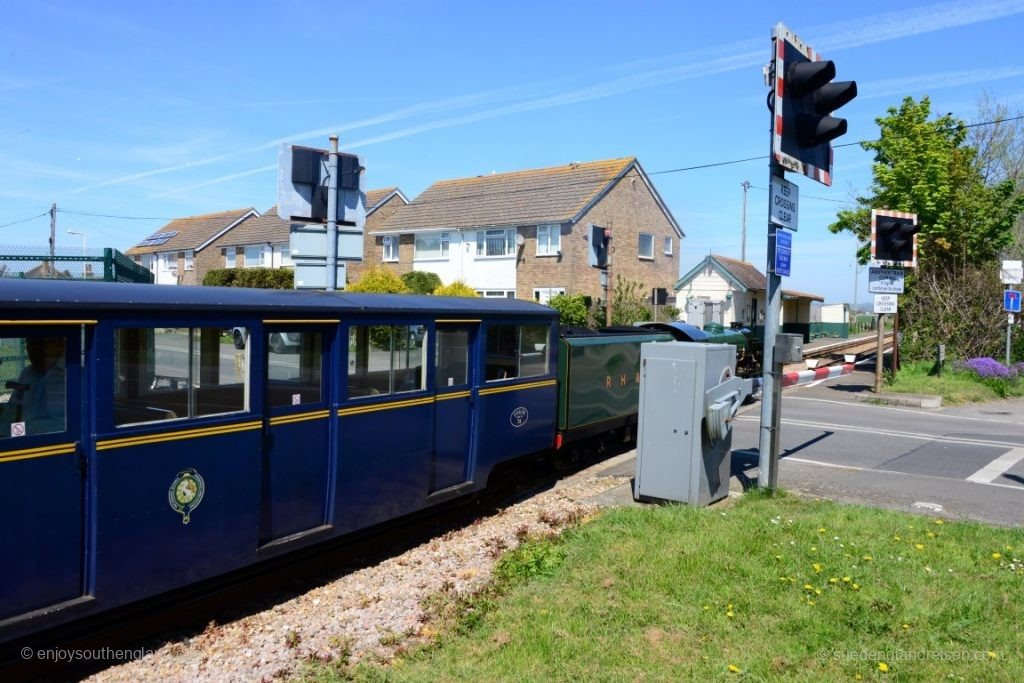
Trains on a scale of 1:3 regularly cross the road traffic
If visitors stand next to the train, they can hardly believe that there is enough space in it, given it has a height of only about one metre. In fact, the feeling of space for a “miniature train” size 1:3 is not bad. Foot space of the vis-a-vis compartments is also large enough. Each compartment has its own access via sliding doors. As a rule, an open carriage is also available on each train. As English weather is often rainy, the closed carriages are usually needed in the summer months. In any case, on a windy and rainy day, it is hard to believe that these small, albeit long, trains are actually able to cope safely with this challenging route.
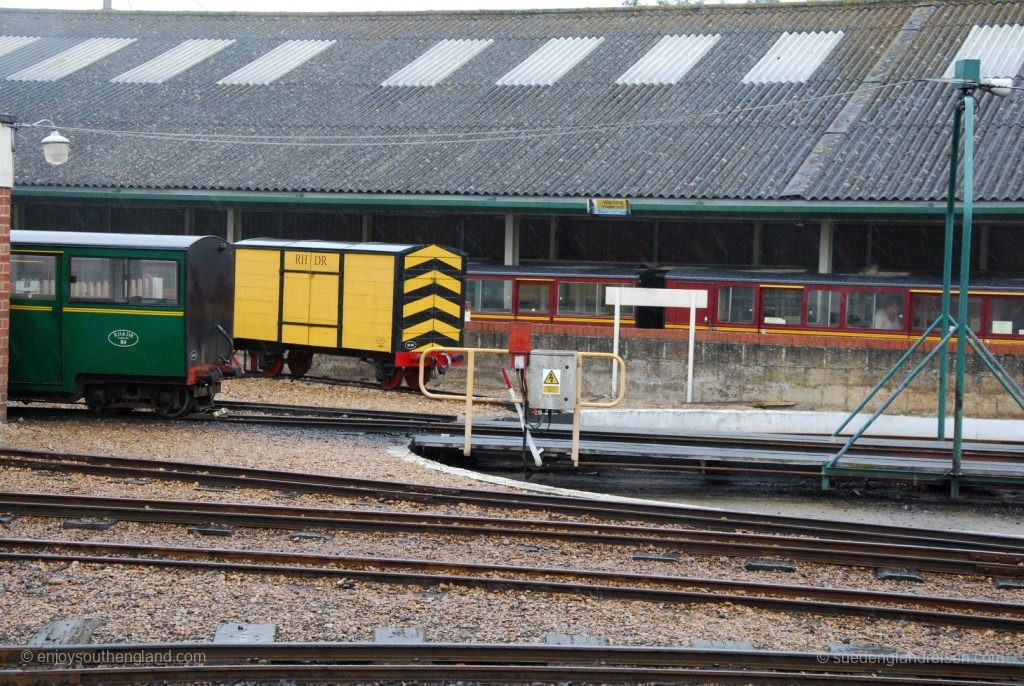
Romney, Hythe & Dymchurch Railway – Operating Impressions from New Romney
It’s worth the trip just to hear the expressions of the visitors when a train enters or exits New Romney and passes through the tiny-looking archway under the road bridge (Quote from a visitor: “How on earth can a train with passengers fit through there?)
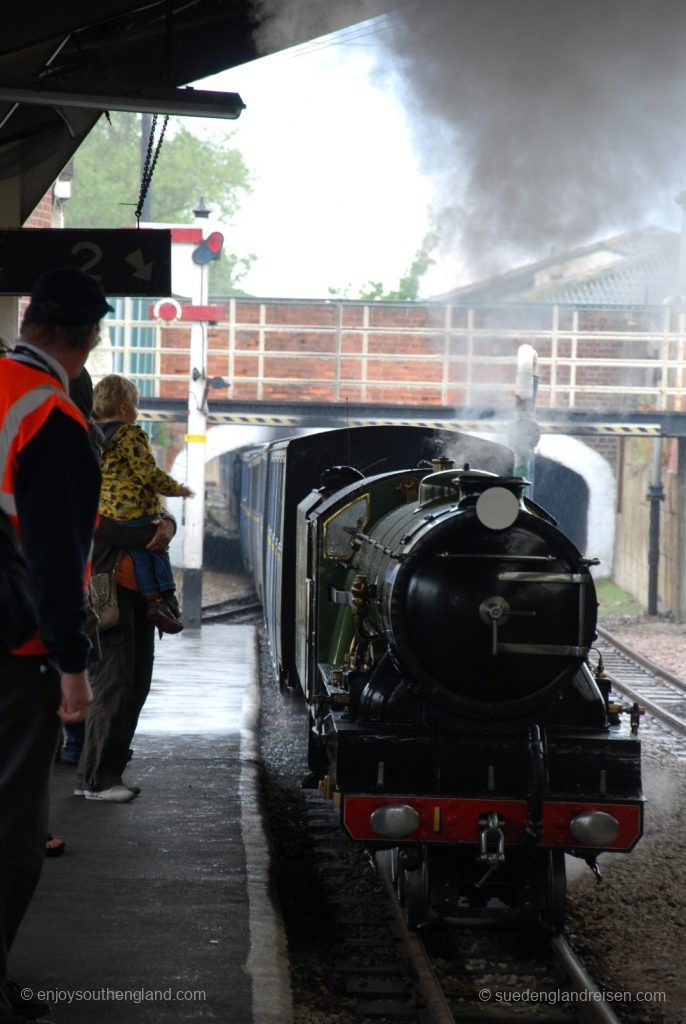
Romney, Hythe & Dymchurch Railway – Arrival of a train coming from Dungeness
When the stoker refills coal in the tender from an iron bucket and the train driver places two large cups of tea directly under the regulators, both staff members don’t even sit side by side on the narrow bench, although the roof of the train barely reaches chest height. This creates a very distinctive atmosphere!
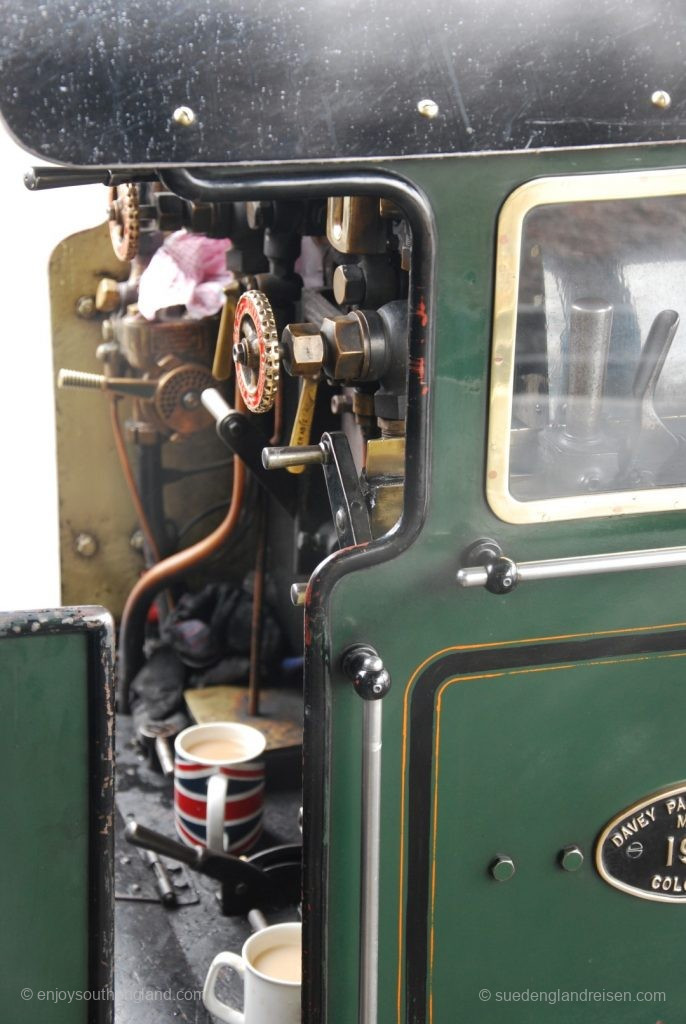
Romney, Hythe & Dymchurch Railway – Lokodetails
The locomotive is already at full steam and, after a loudspeaker announcement, as at all other major stations, the signal is set to go and the departure order is issued. Under mighty steam output, the 11:30 train to Dungeness pulls away and sets off on its journey of about half an hour through the pouring rain over the windswept marshland to the south.
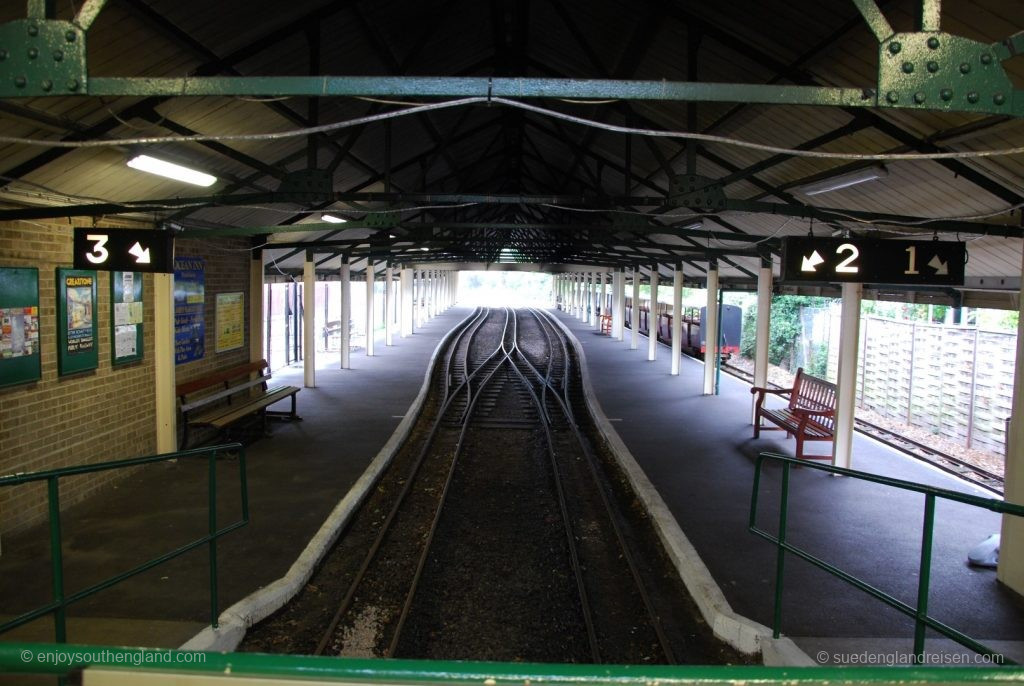
Romney, Hythe & Dymchurch Railway – like a big train: station concourse in Hyth
If you don’t just want to experience this as a passenger, but want to stand, sorry sit at the controls yourself, you can do this on special courses. From simple rides as a basic course to self-driving as a full-day course, everything is offered – but the latter is only offered during the non-operational period from October to March. Incidentally, most of the operation is maintained with voluntary unpaid employees working in all areas. What is striking is their active recruitment by means of flyers and the invitation to discuss together possibilities of cooperation and ideas of the potential candidate over a cup of tea. If this candidate is suitable, the use of training courses, is available in all areas up to and including the train driver. For more information, including how to get there, visit the Romney, Hythe & Dymchurch Railway on its website.






